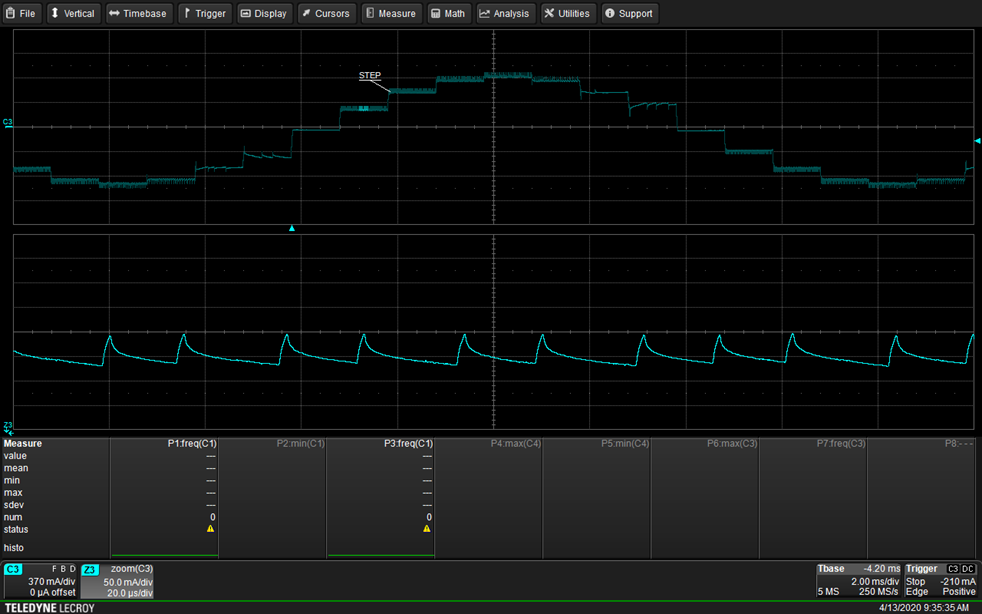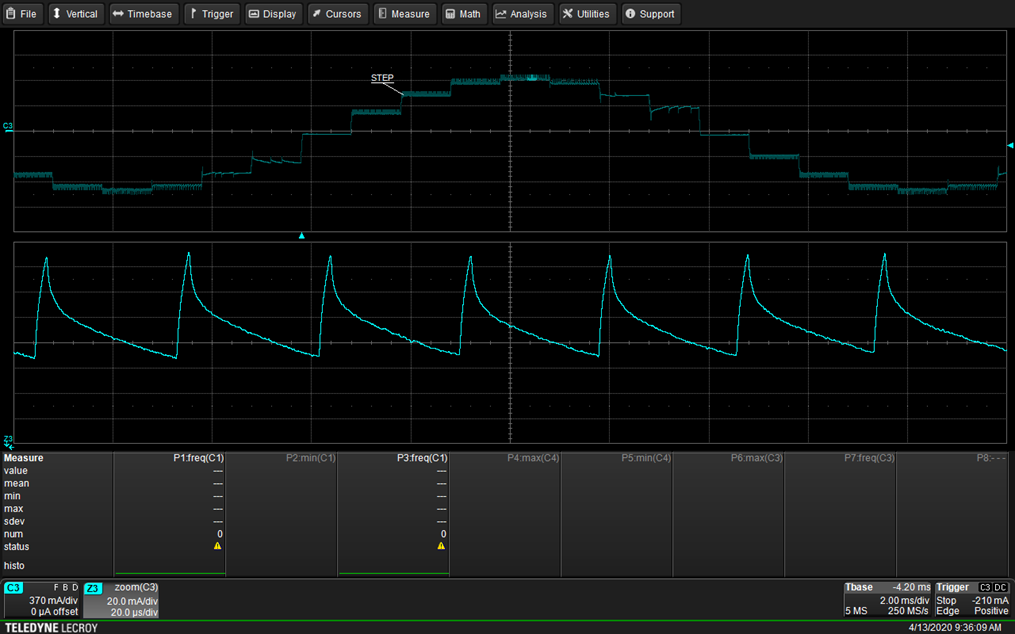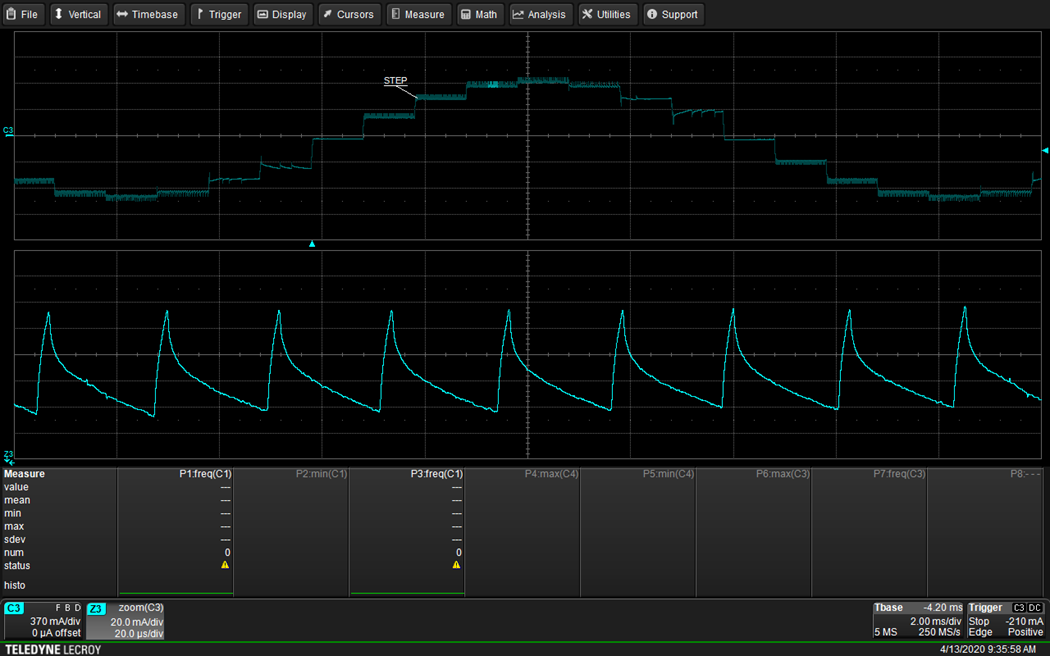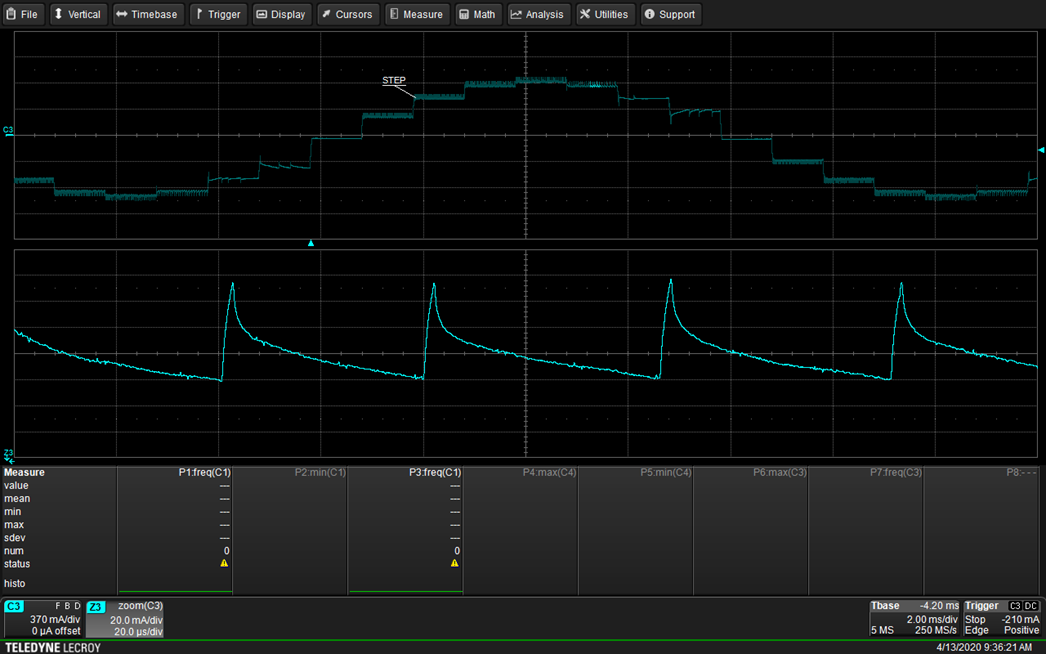SLVAES8 May 2020 DRV8424 , DRV8424E , DRV8426 , DRV8428 , DRV8428E , DRV8434 , DRV8434E , DRV8434S , DRV8436 , DRV8436E , DRV8889-Q1
3.3.2 Effects of PWM Chopper Frequency
If the PWM frequency falls within the audible band, it manifests itself as a whine coming out of the stepper motor. Even when the motor is stopped and holds the position, the noise associated with PWM frequency will be audible. If the chopping frequency is ultrasonic, a hissing sound can be heard.
Legacy stepper drivers often have a pin which controls the OFF time of the PWM by using two R-C passive components. Designs with 50 µs OFF time are common. When the ON time is added to the OFF time, the resulting PWM frequency will be less than 20 kHz and generate audible noise. Therefore, it can be concluded that noise can be reduced by increasing the PWM frequency. Too high PWM frequency will also lead to higher switching losses, therefore it may not be desirable to increase the frequency well above the audible range. An appropriate PWM frequency value will be between 30 kHz and 50 kHz.
Equation 1 shows the approximate relation between the PWM frequency and the current ripple for the smart tune Ripple Control decay mode. VM is the supply voltage, VBEMF is the back-emf voltage, L is the inductance of the motor coil and ΔI is the ripple current. As is evident, PWM frequency will be high when the ripple current is low.

Figure 12 to Figure 15 show the PWM frequencies at different current levels for DRV8424 smart tune Ripple Control and 1/4 microstepping. The PWM frequencies range between 25 kHz and 55 kHz, well beyond the audible range. In general, lowest current ripple results in PWM frequencies that fall beyond 20 kHz and therefore do not impact the audible noise levels from the stepper motor.
 Figure 12. PWM at 38% Level, PWM Frequency is 55 kHz
Figure 12. PWM at 38% Level, PWM Frequency is 55 kHz
 Figure 14. PWM at 100% Level, PWM Frequency is 35 kHz
Figure 14. PWM at 100% Level, PWM Frequency is 35 kHz
 Figure 13. PWM at 92% Level (increasing), PWM Frequency is 44 kHz
Figure 13. PWM at 92% Level (increasing), PWM Frequency is 44 kHz
 Figure 15. PWM at 92% Level (decreasing), PWM Frequency is 25 kHz
Figure 15. PWM at 92% Level (decreasing), PWM Frequency is 25 kHz